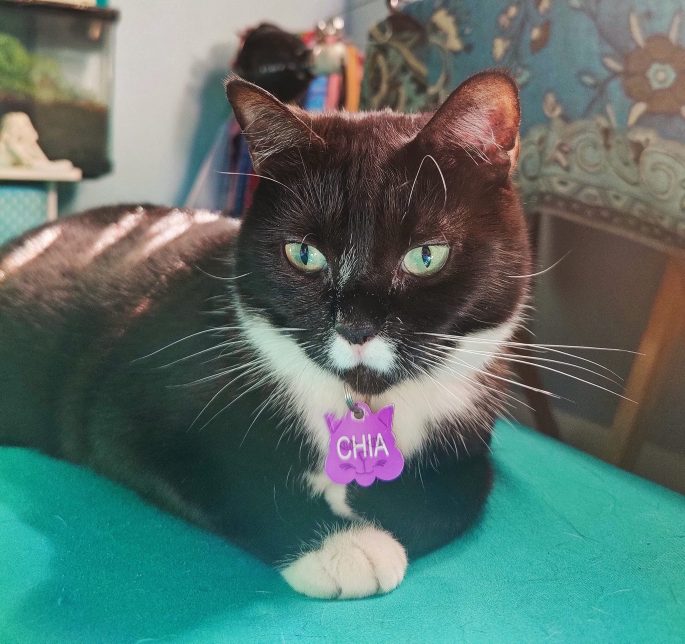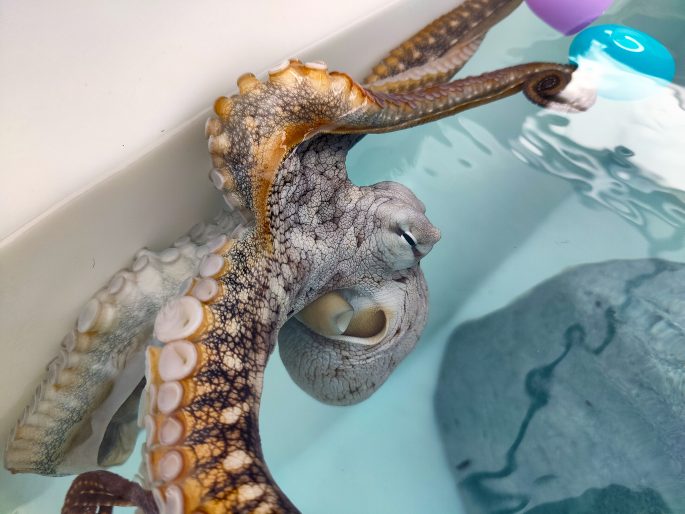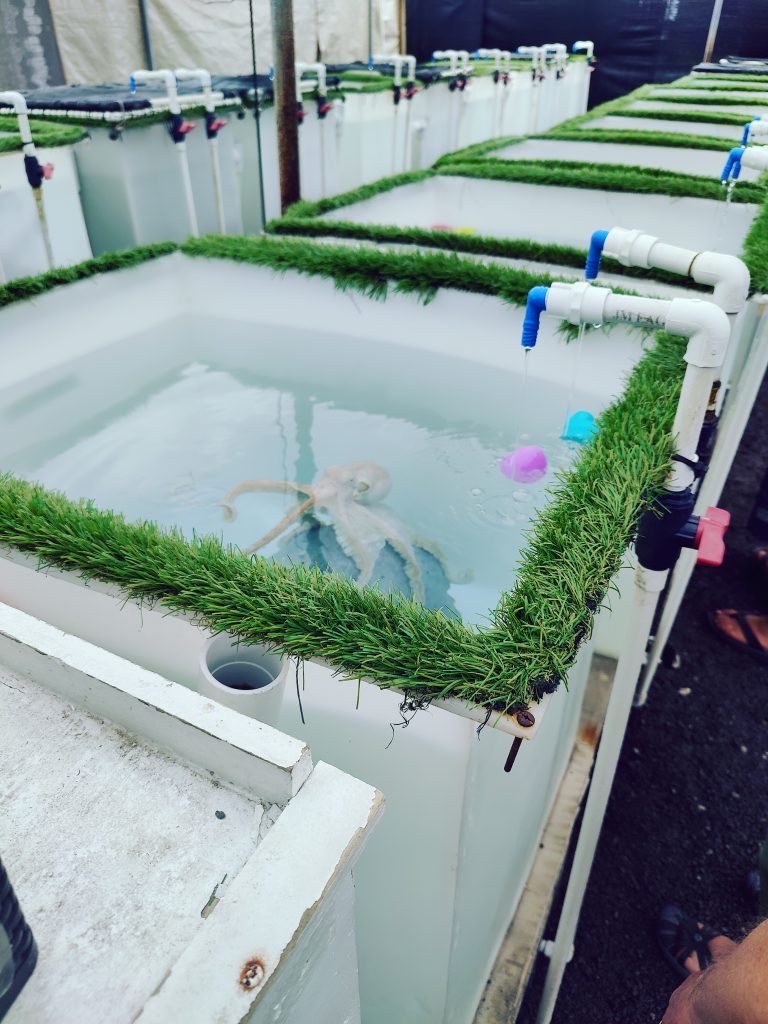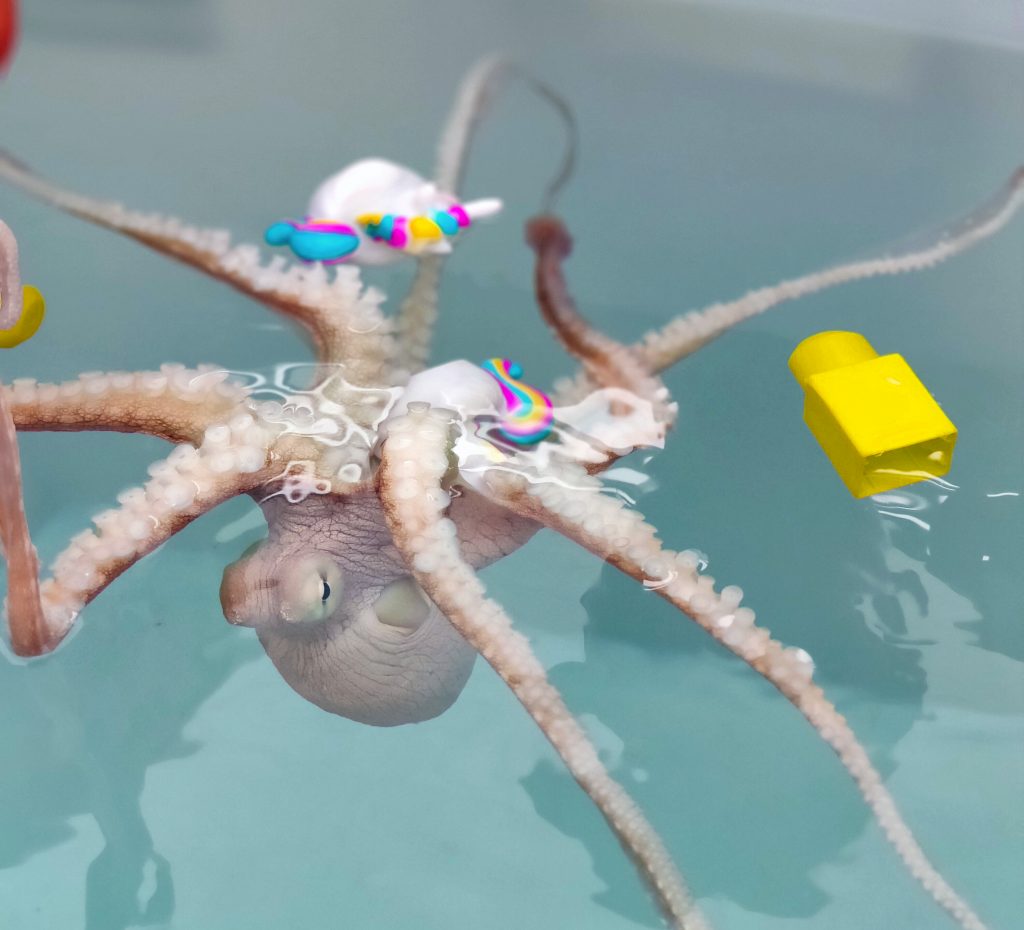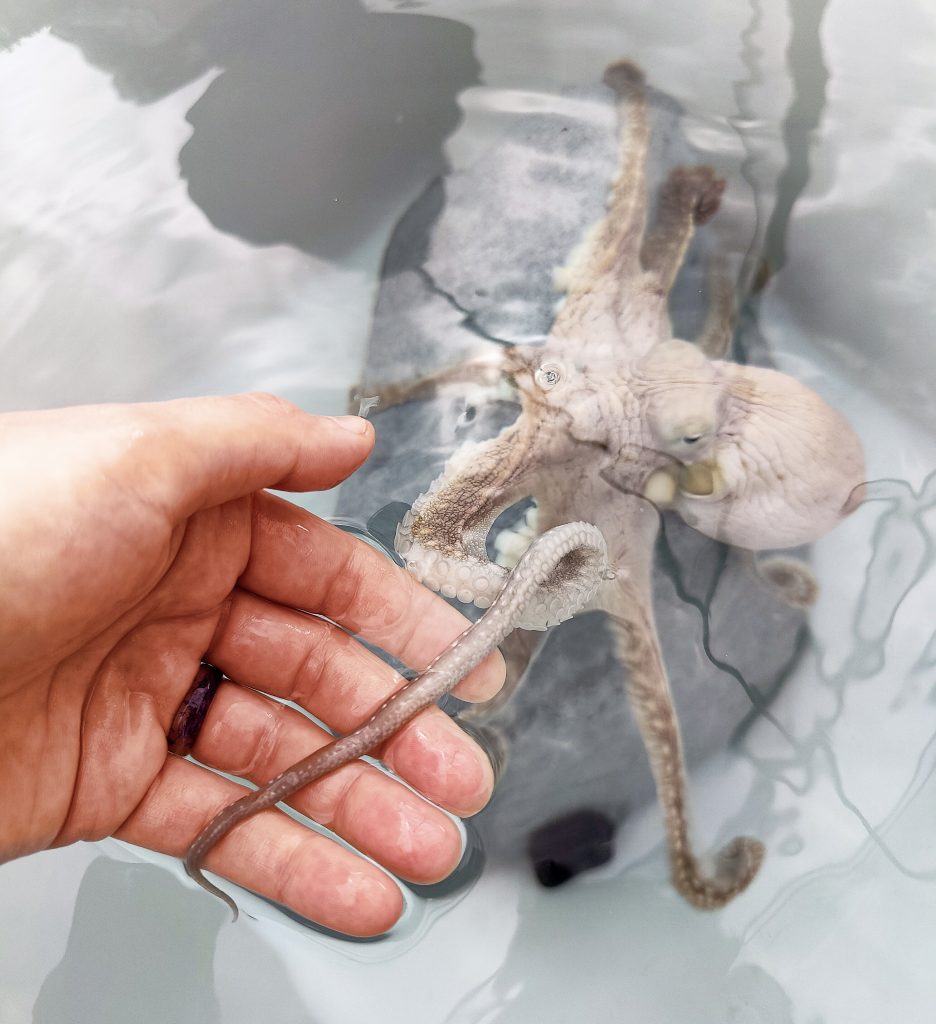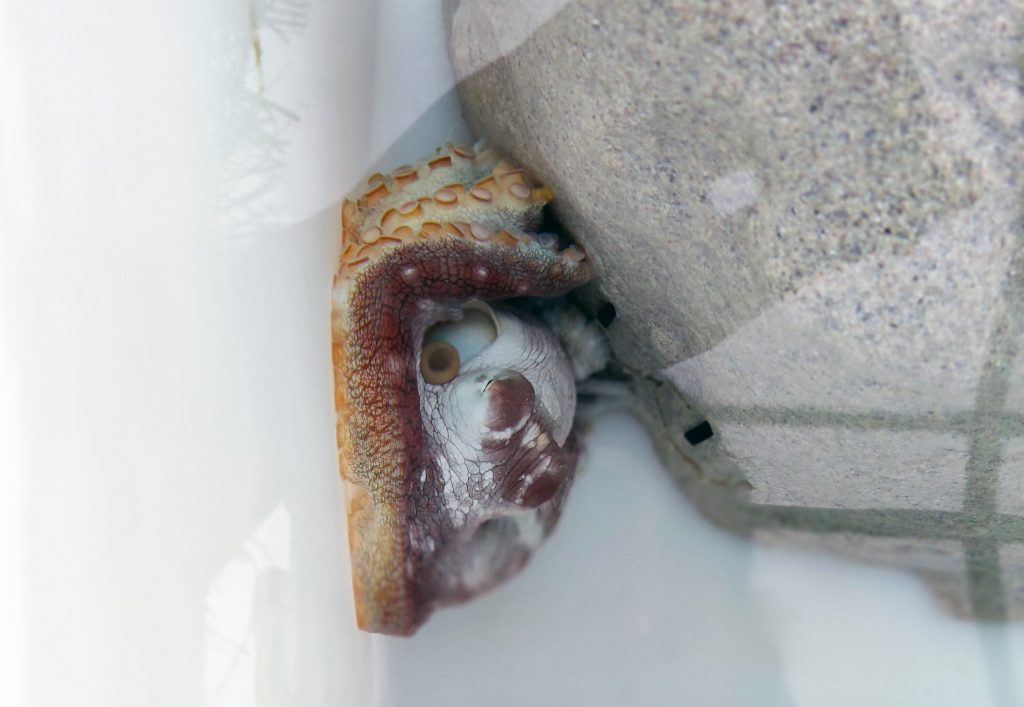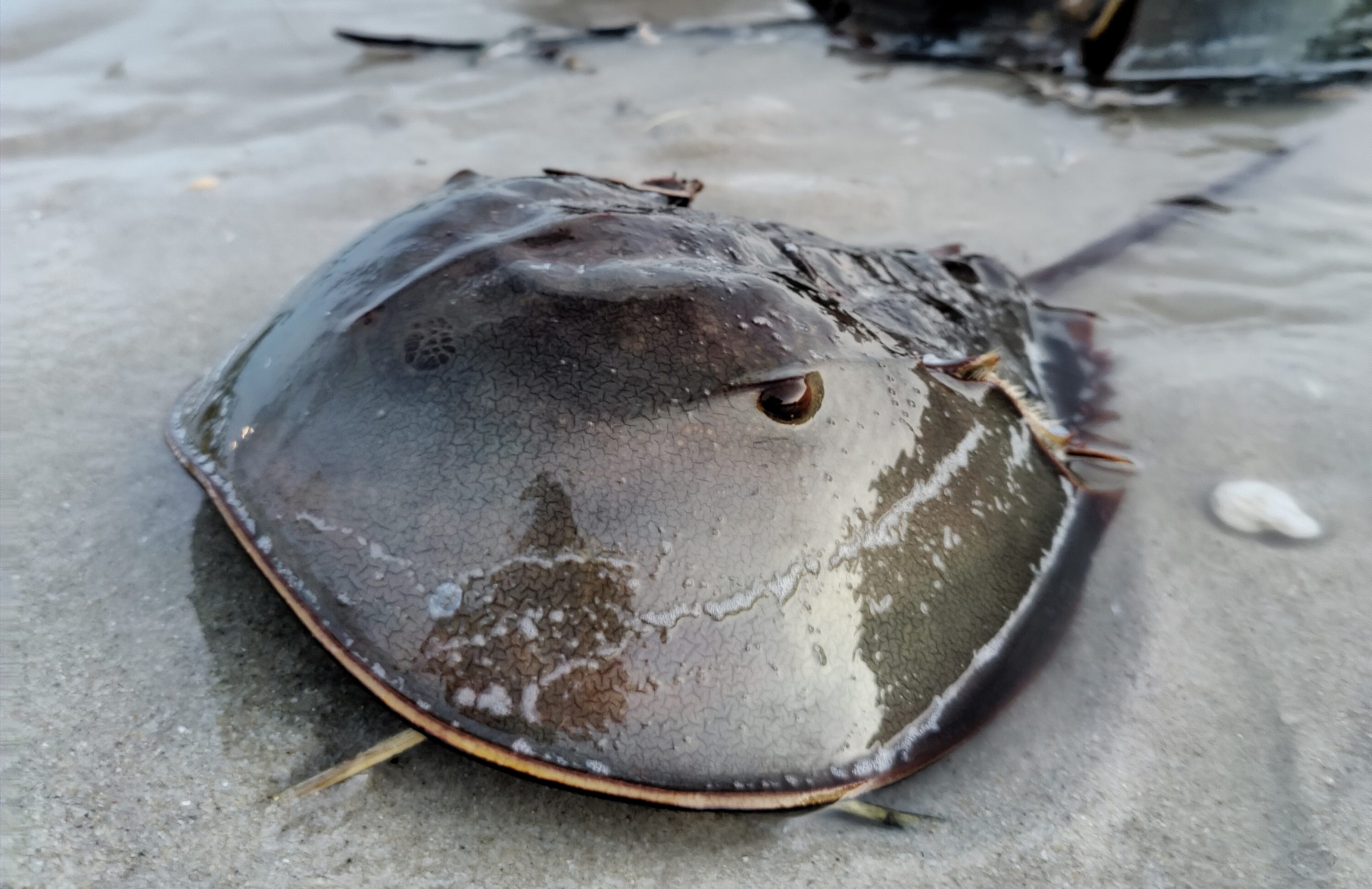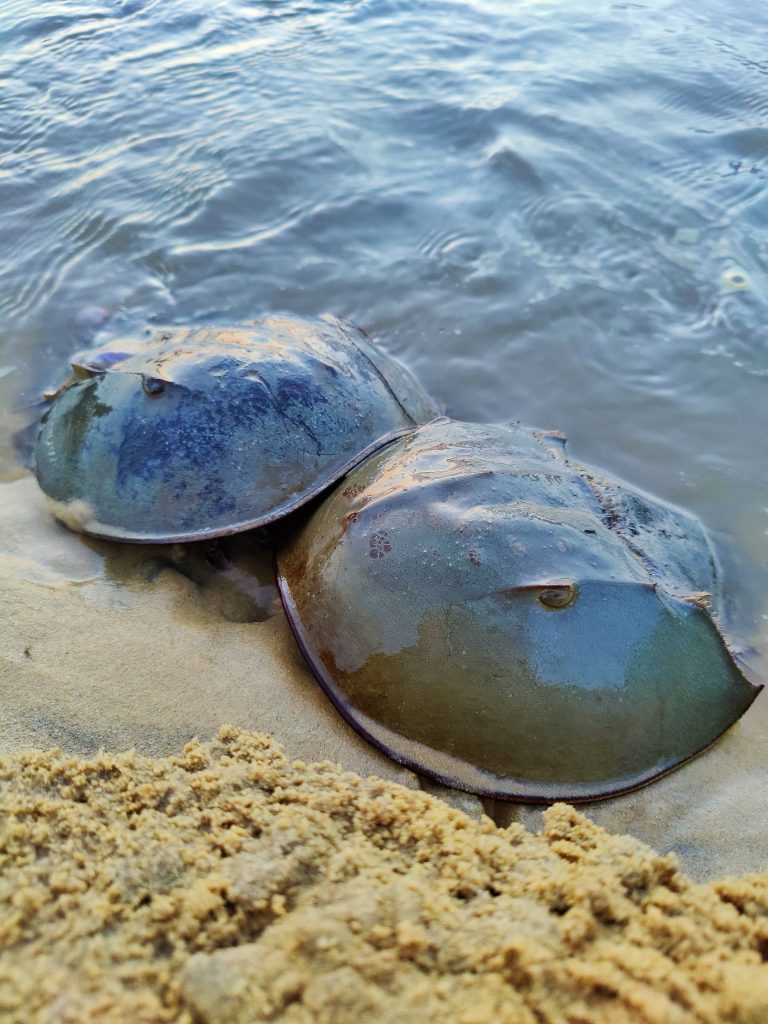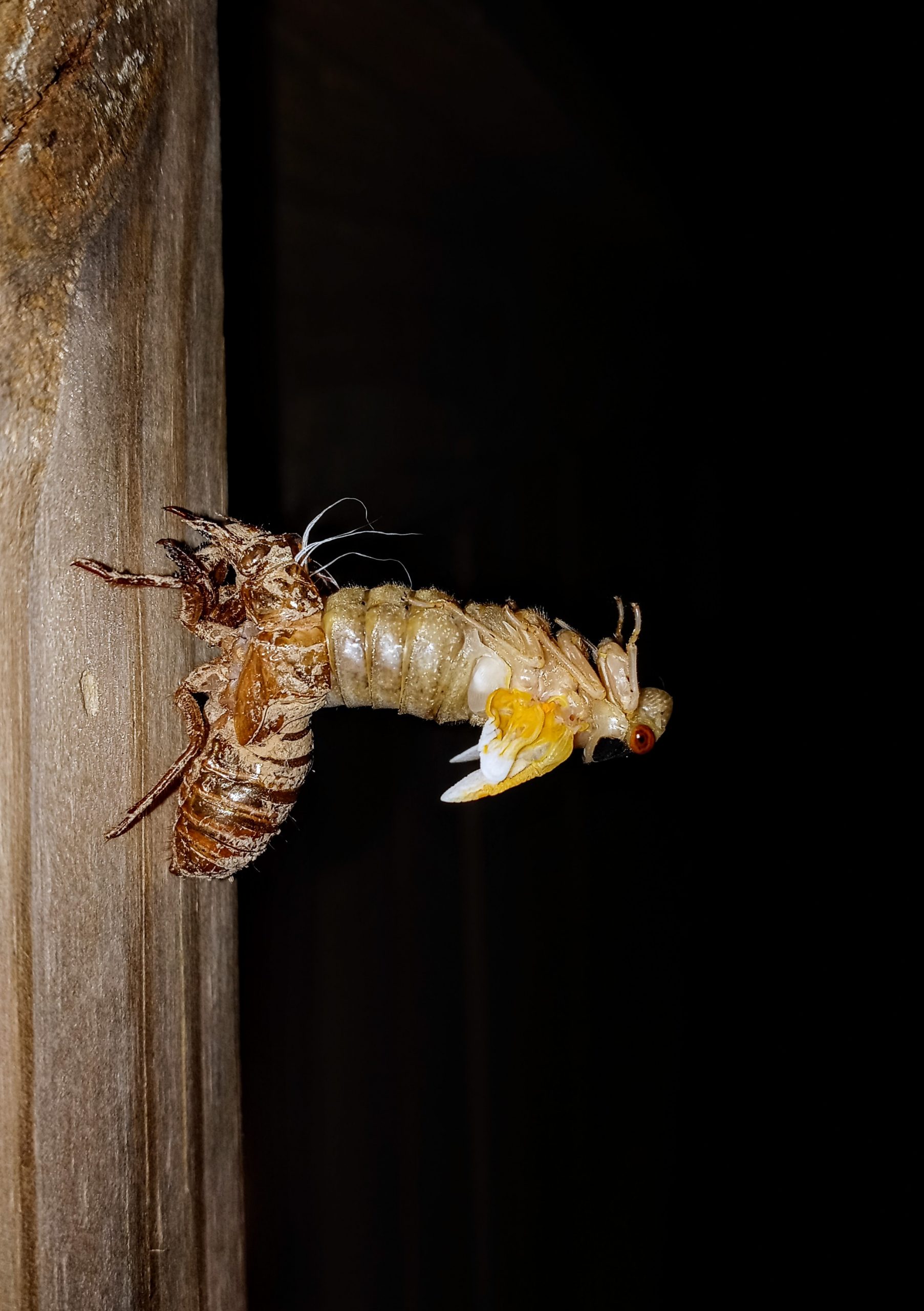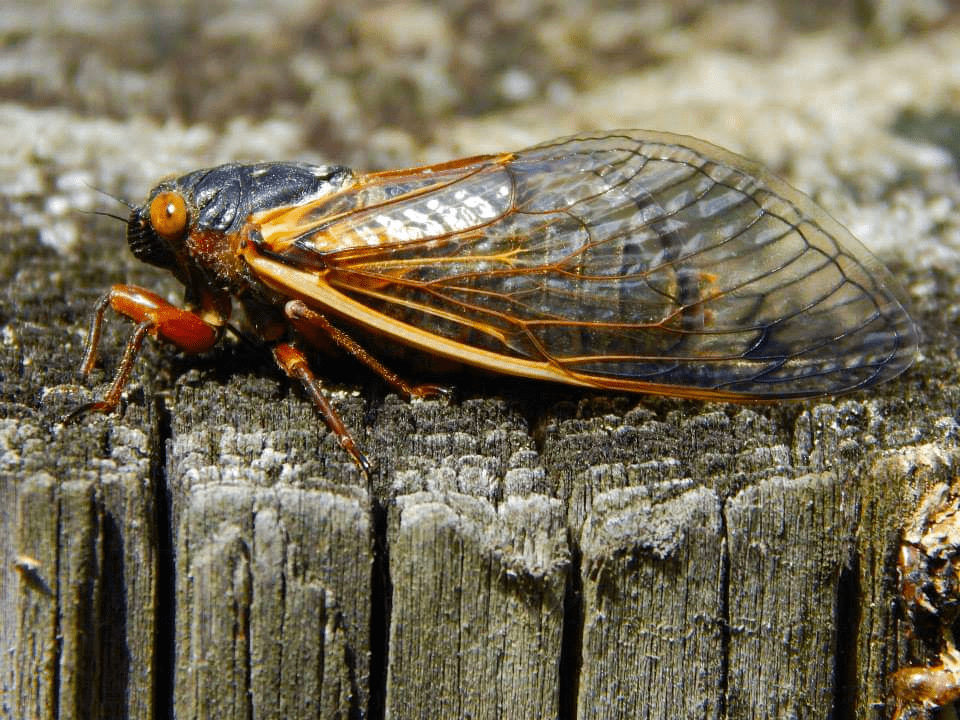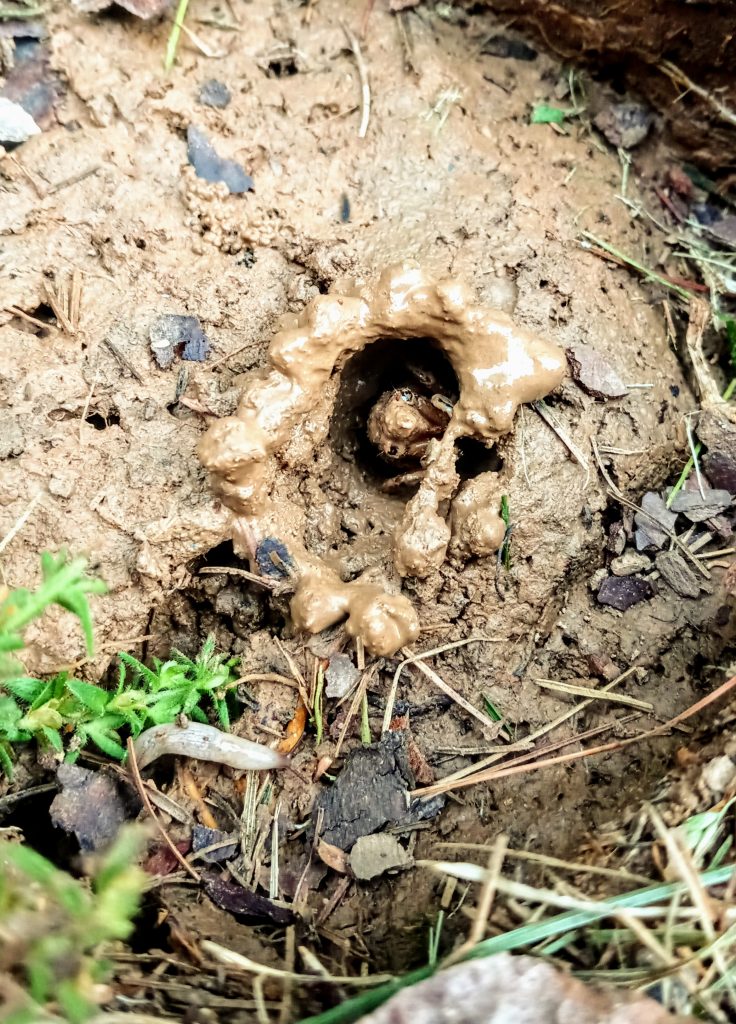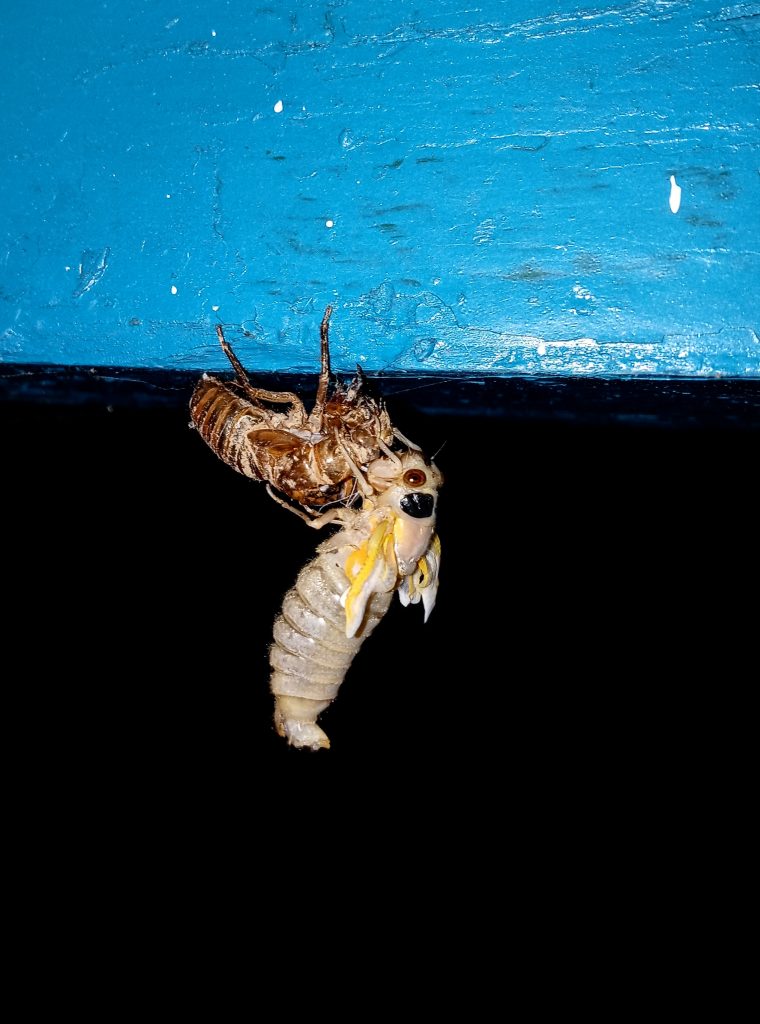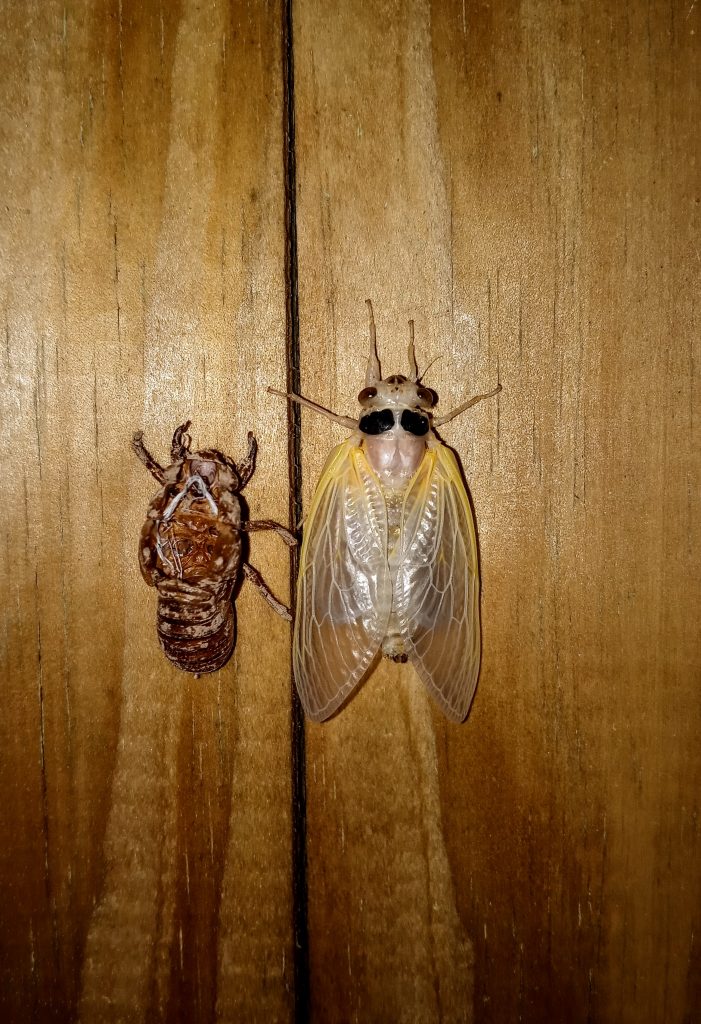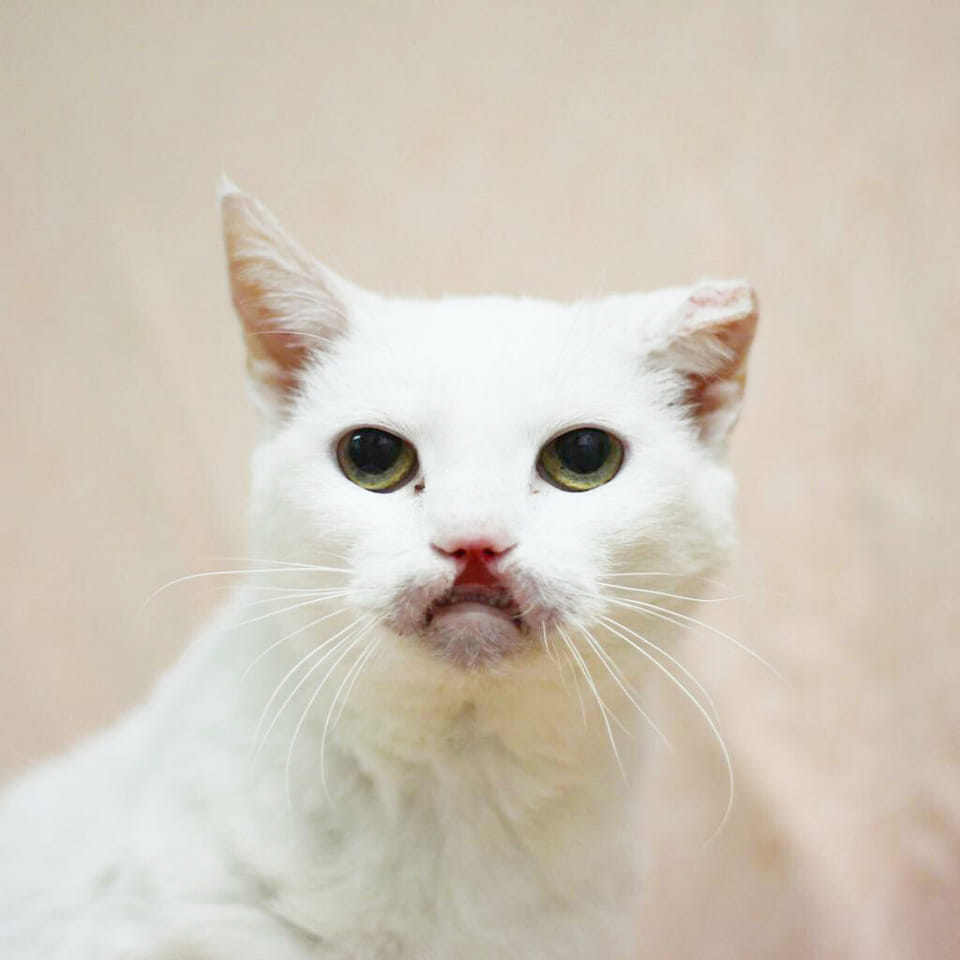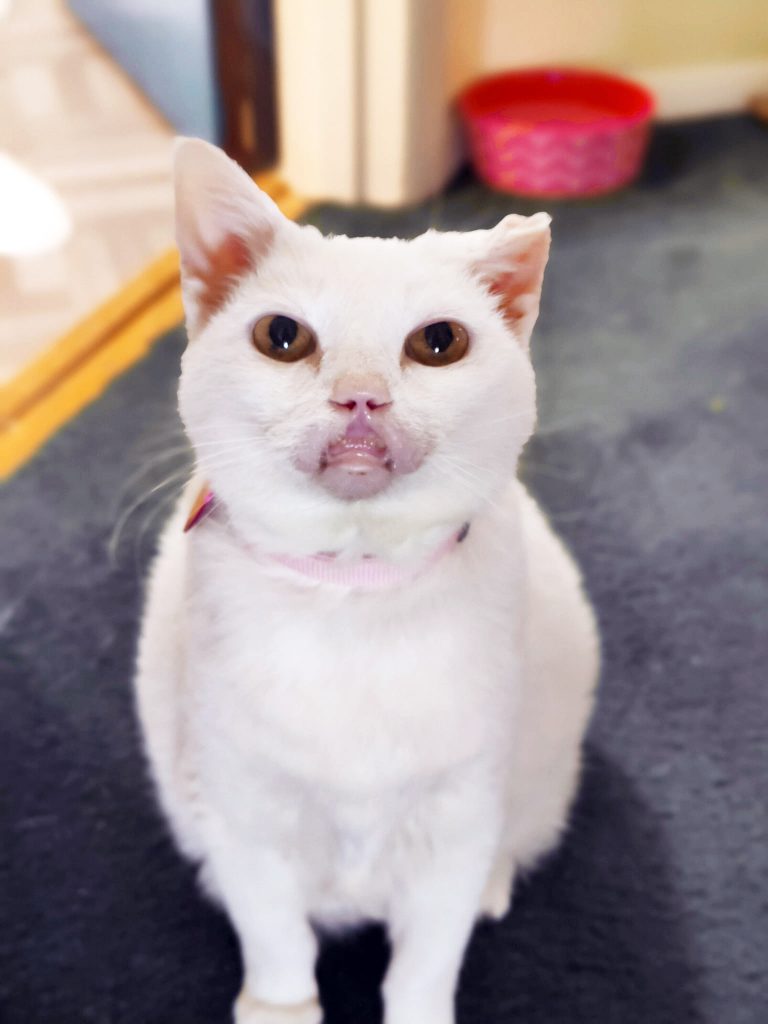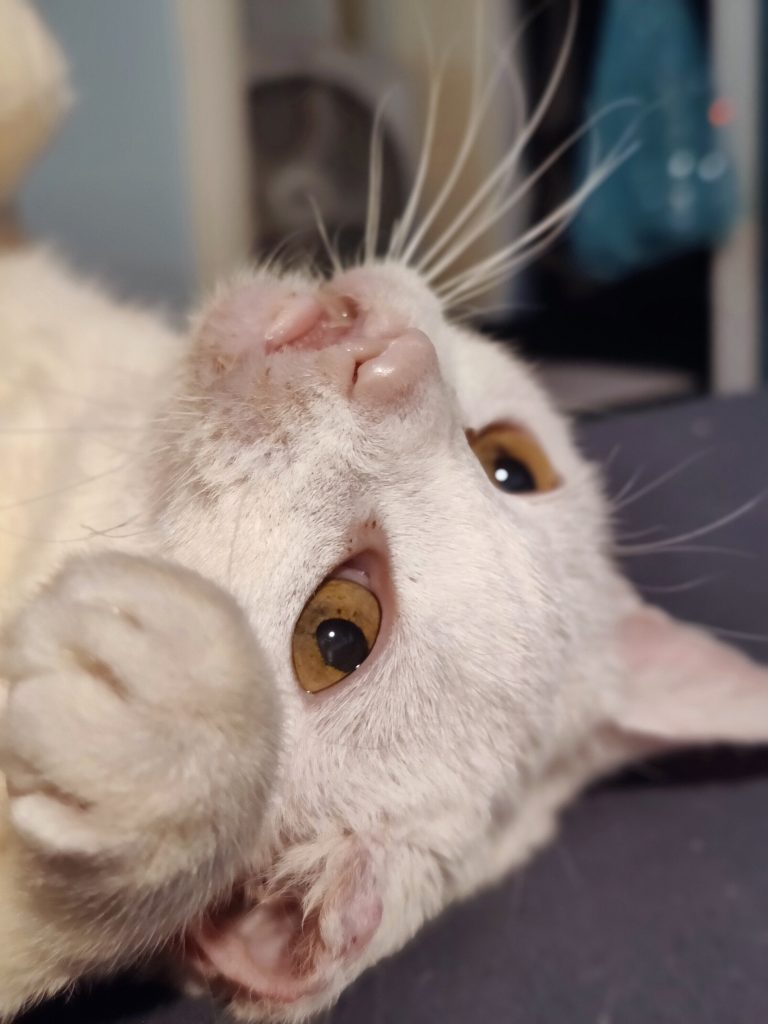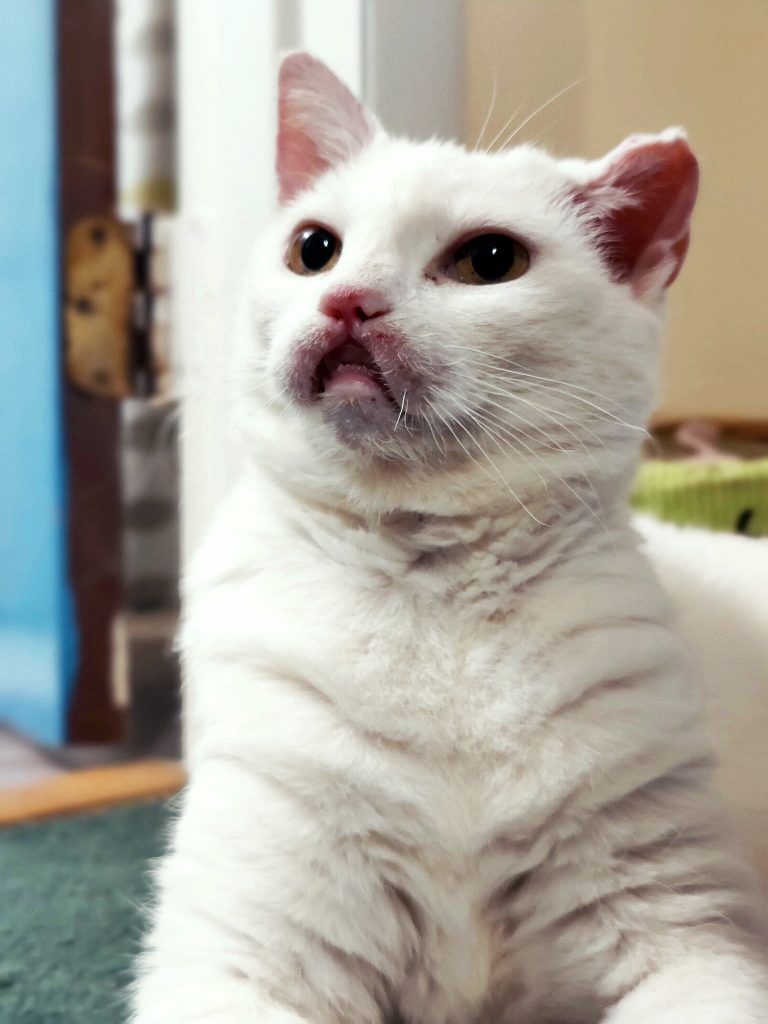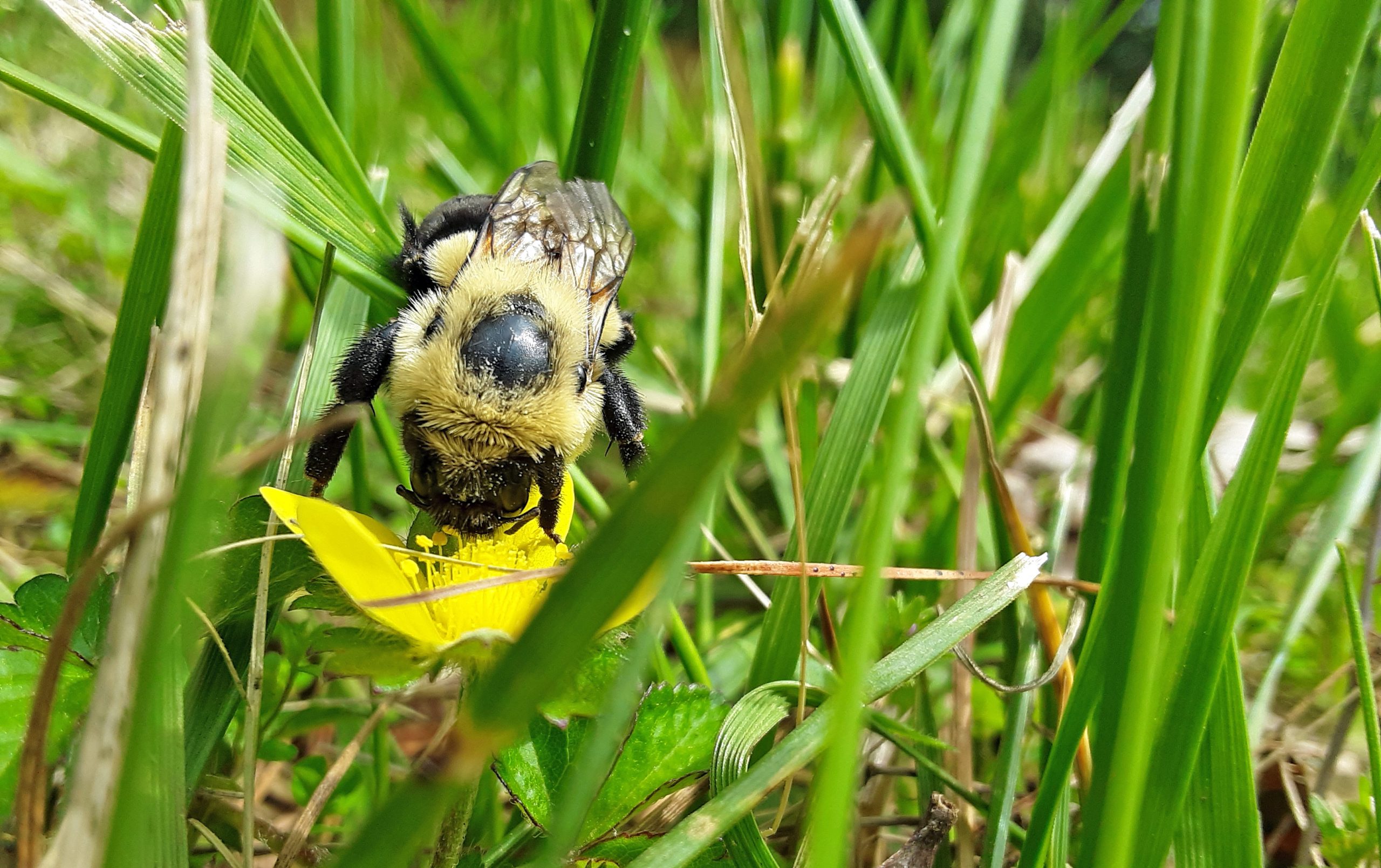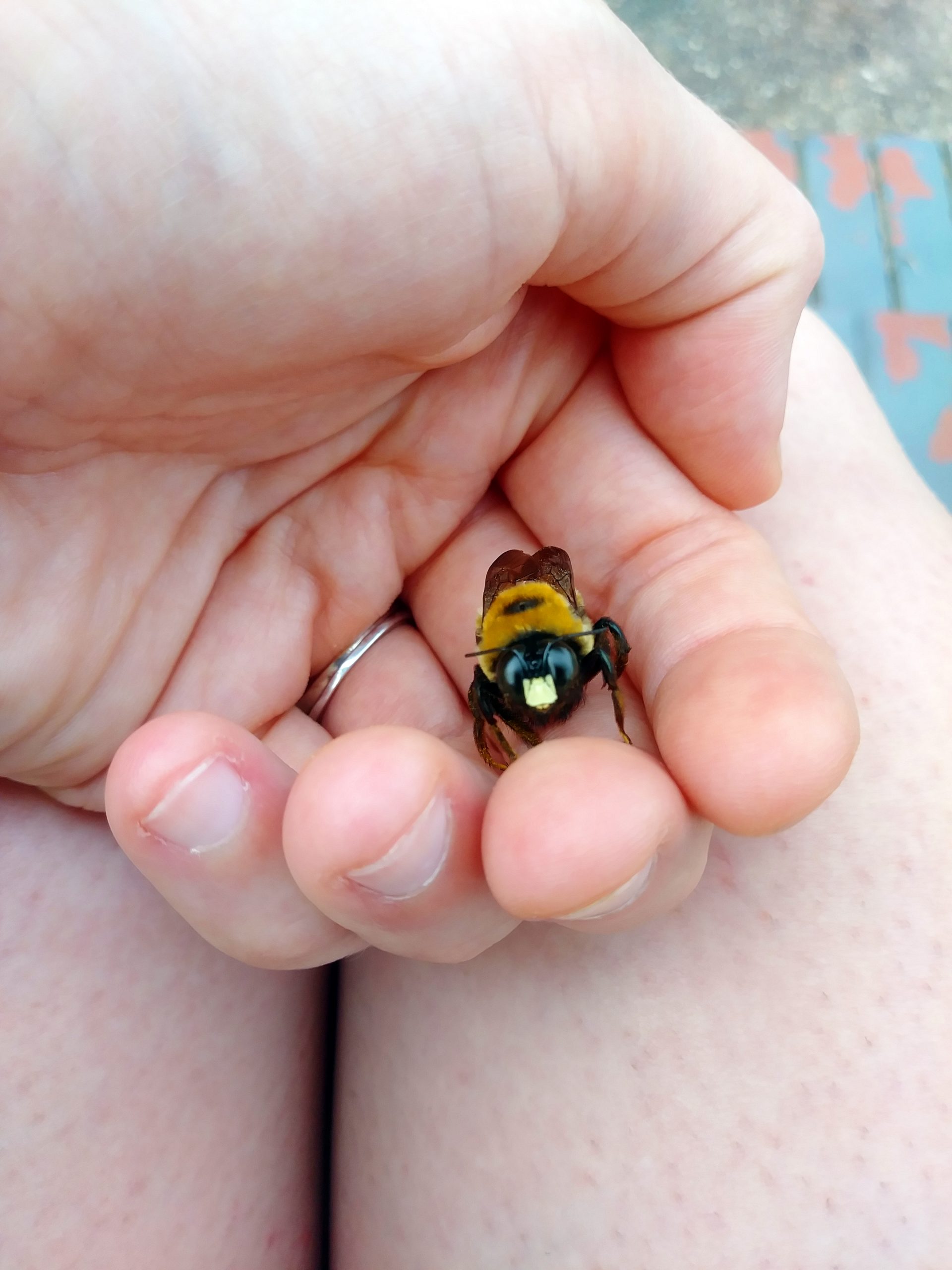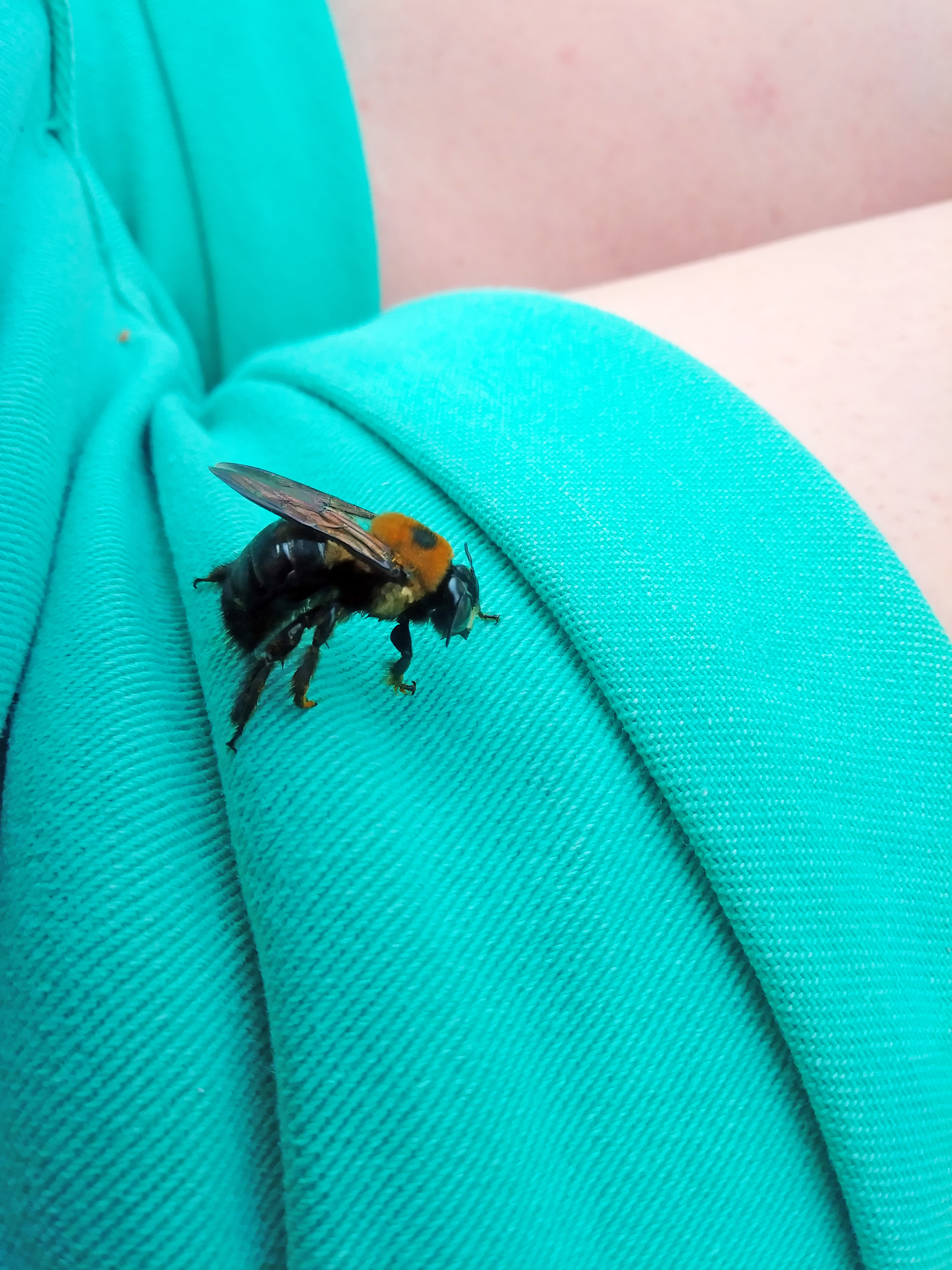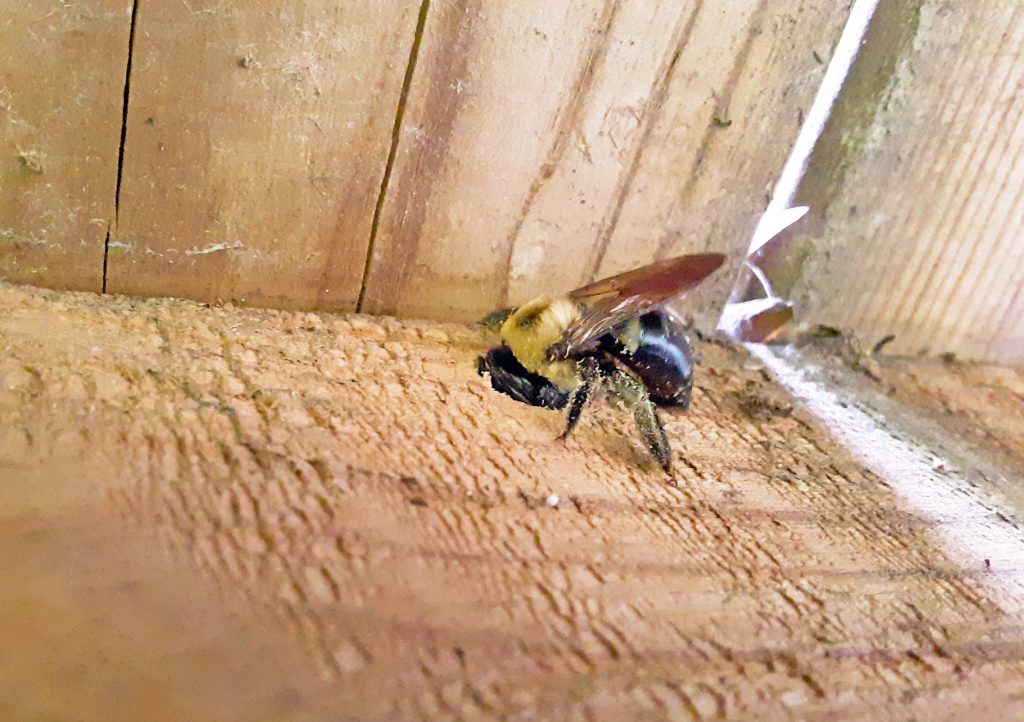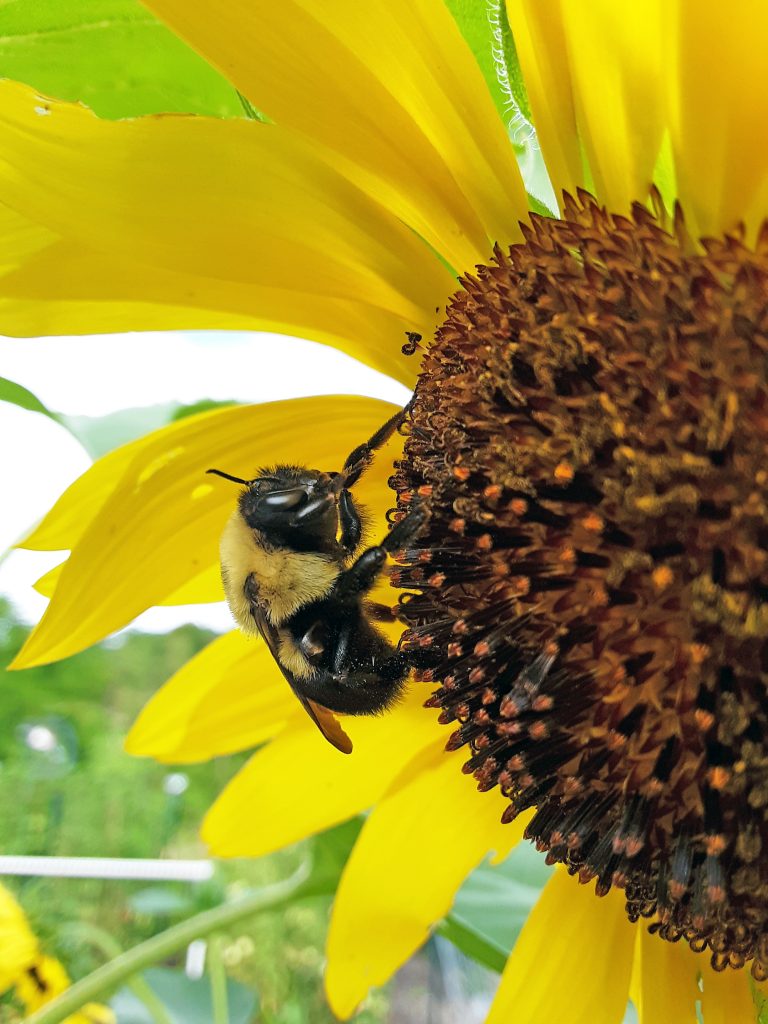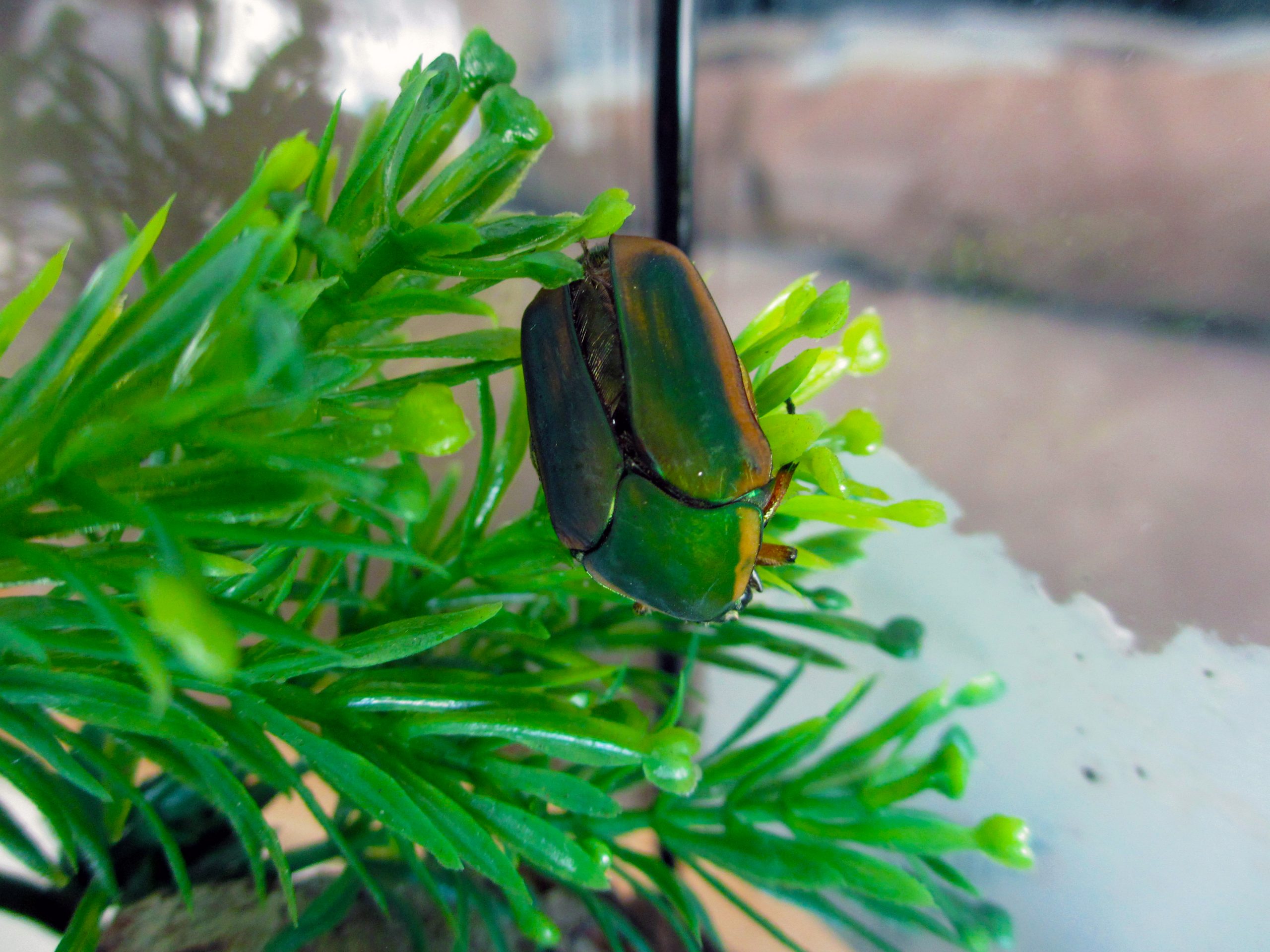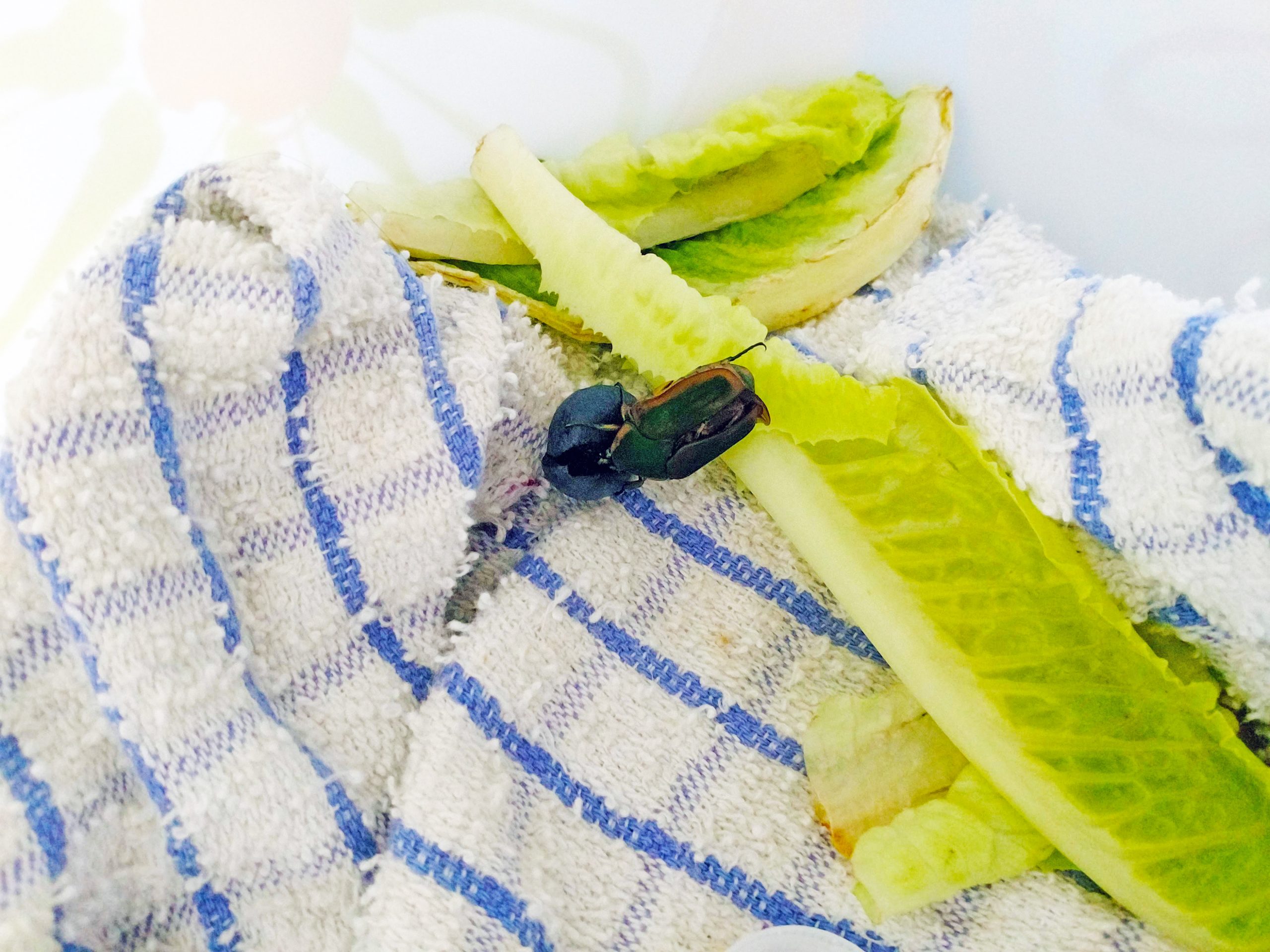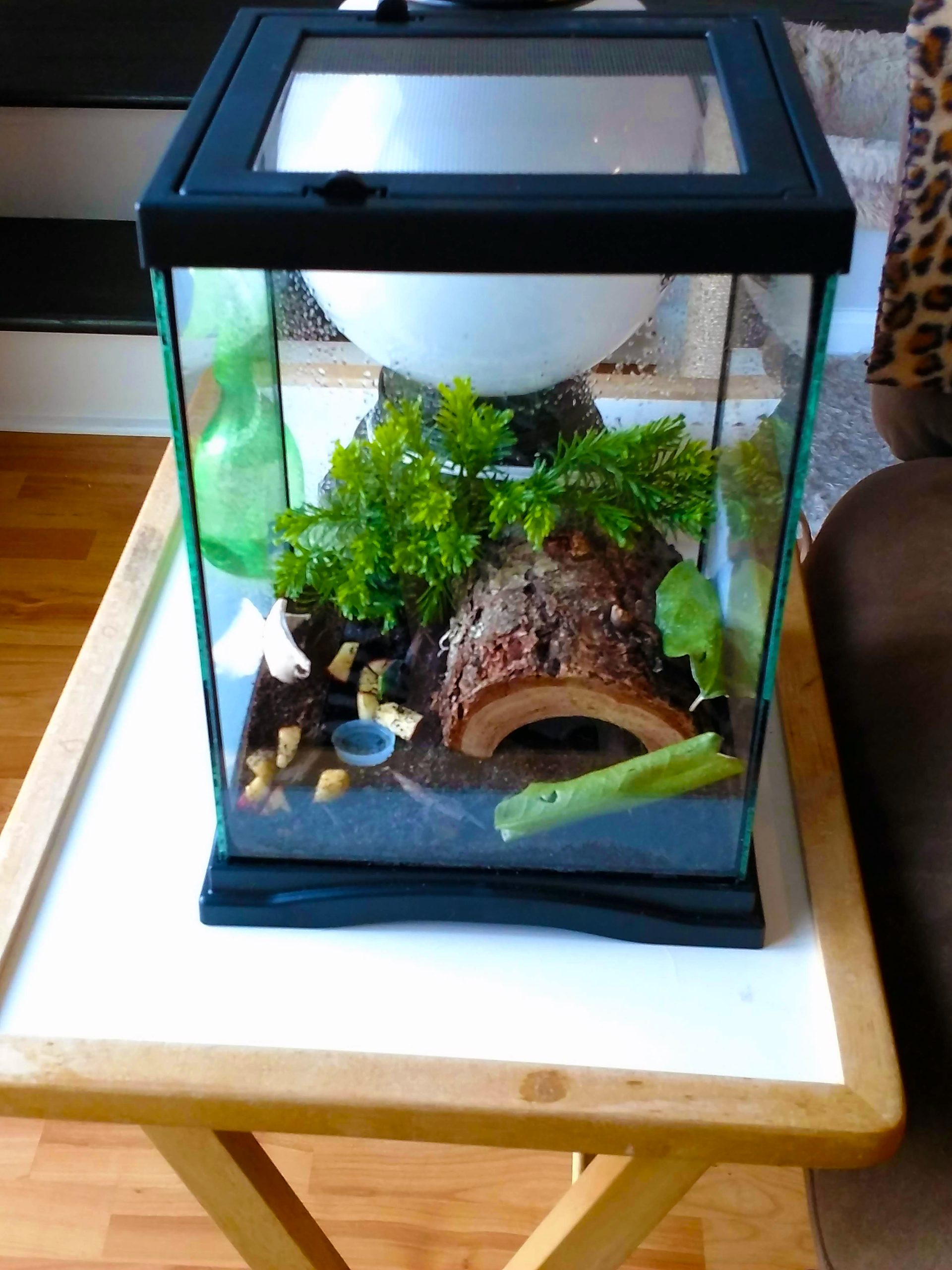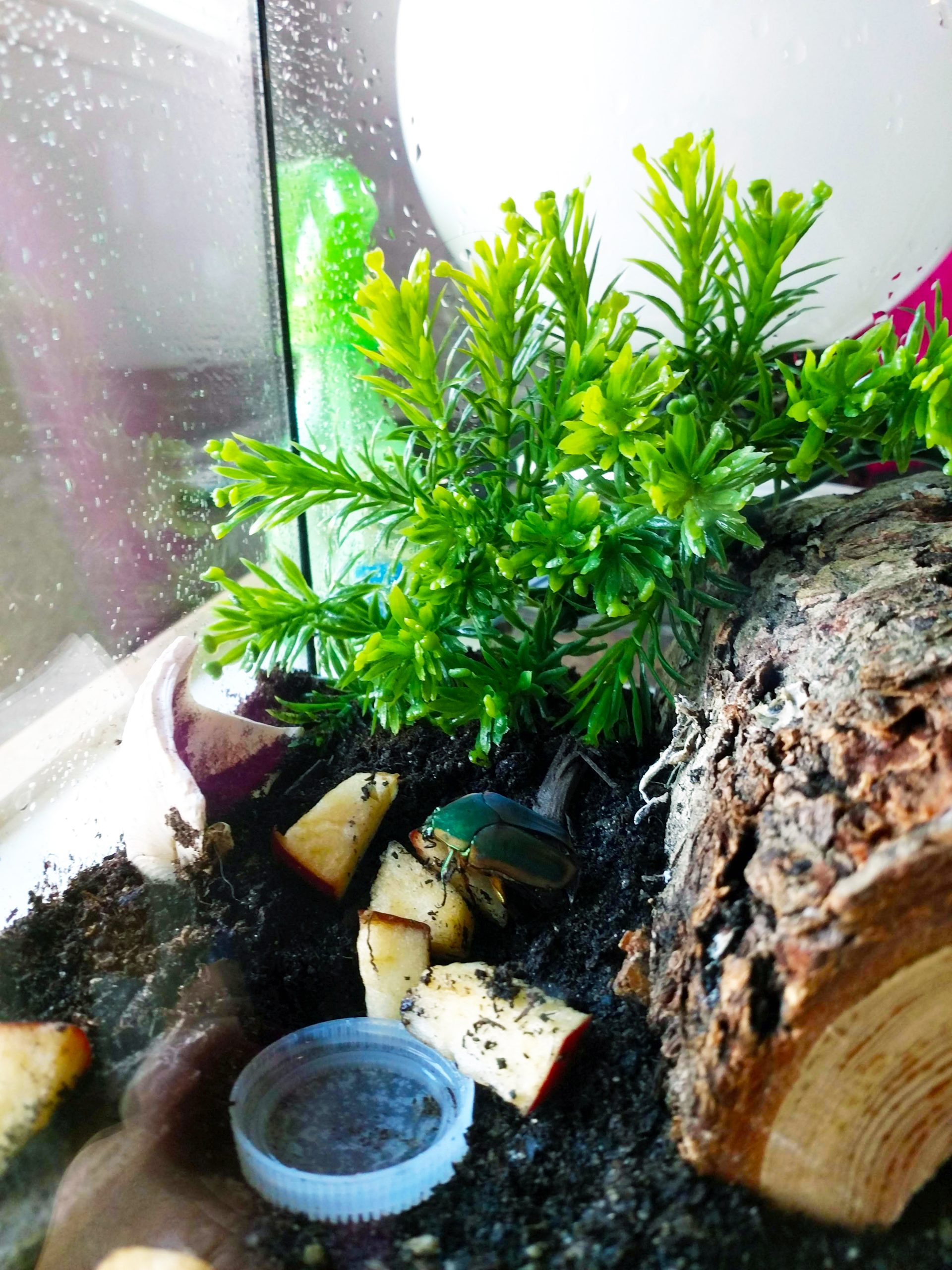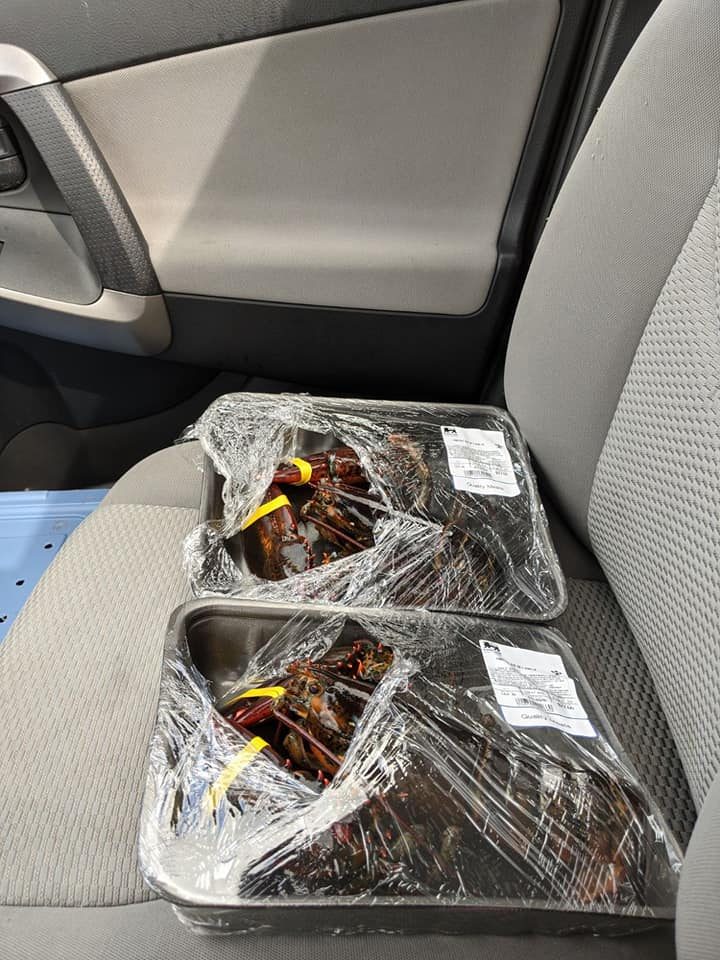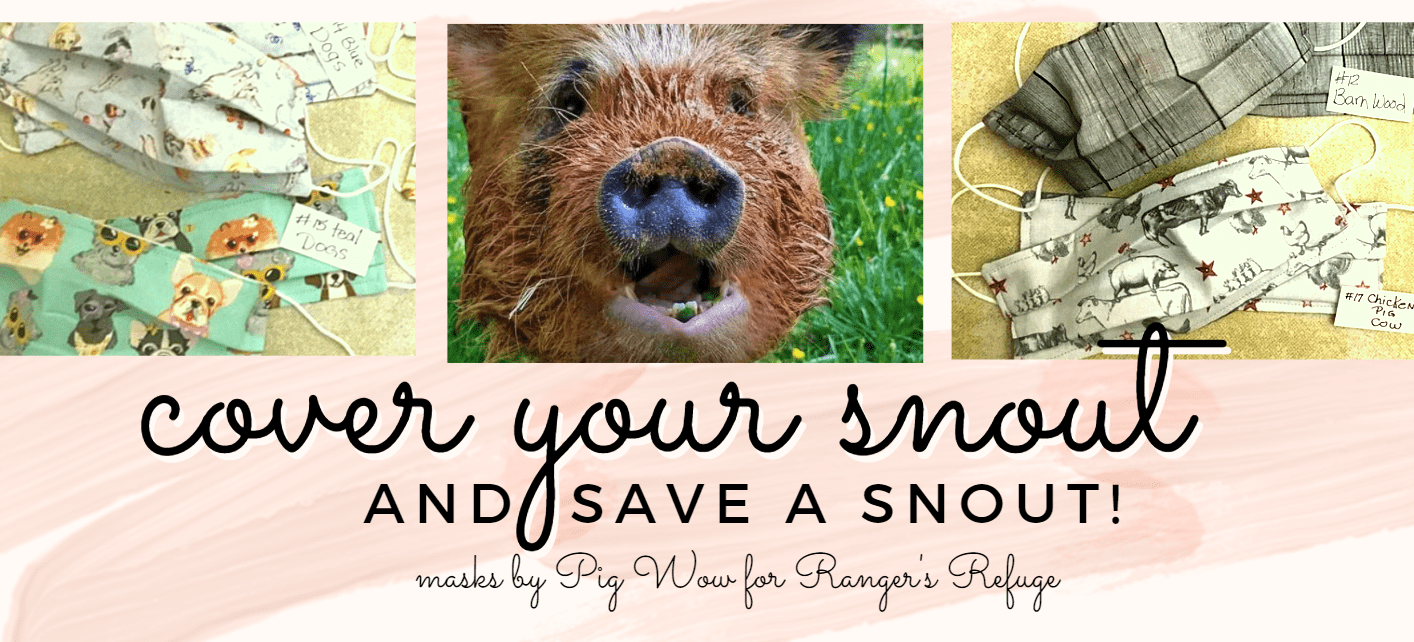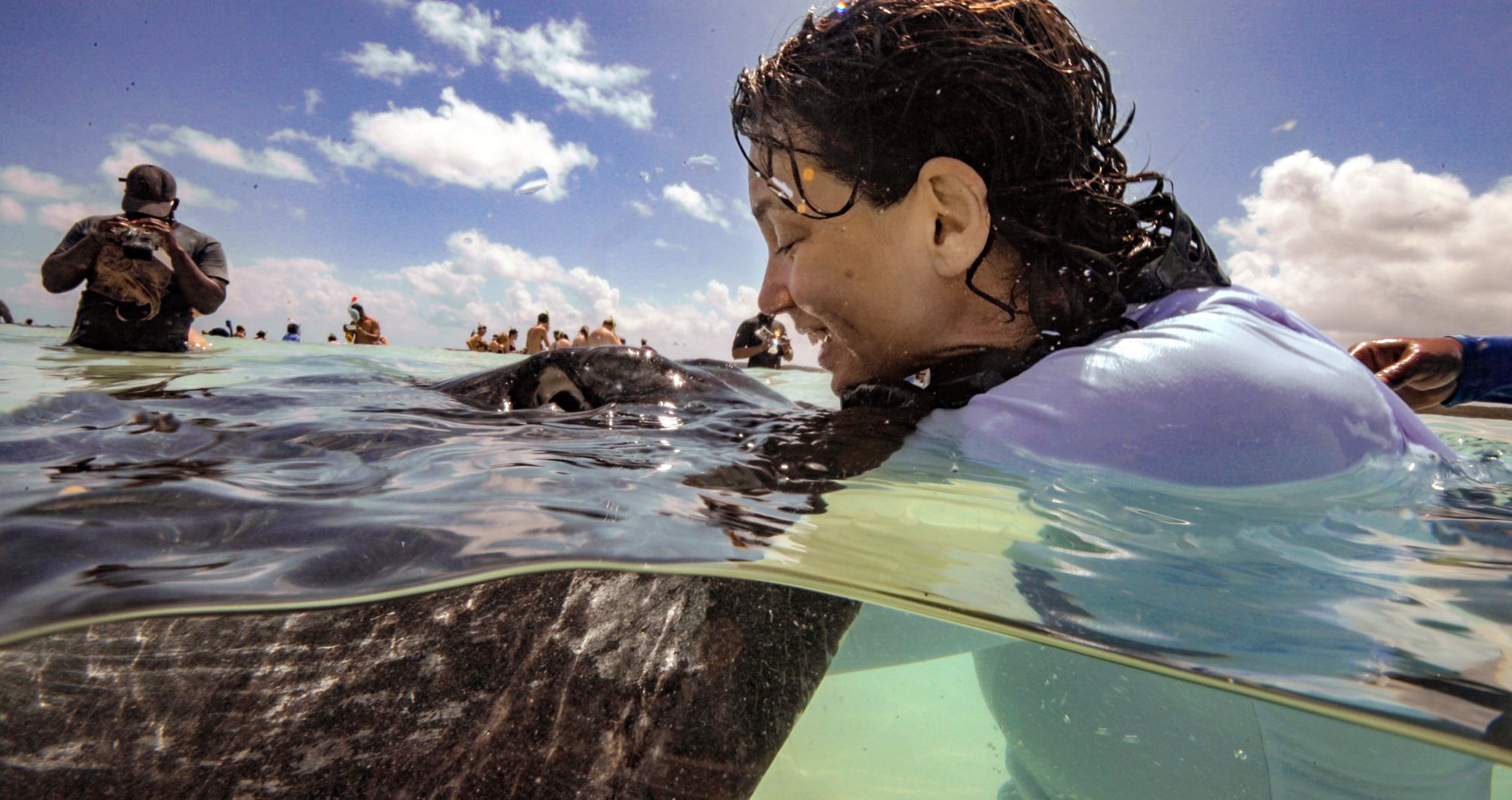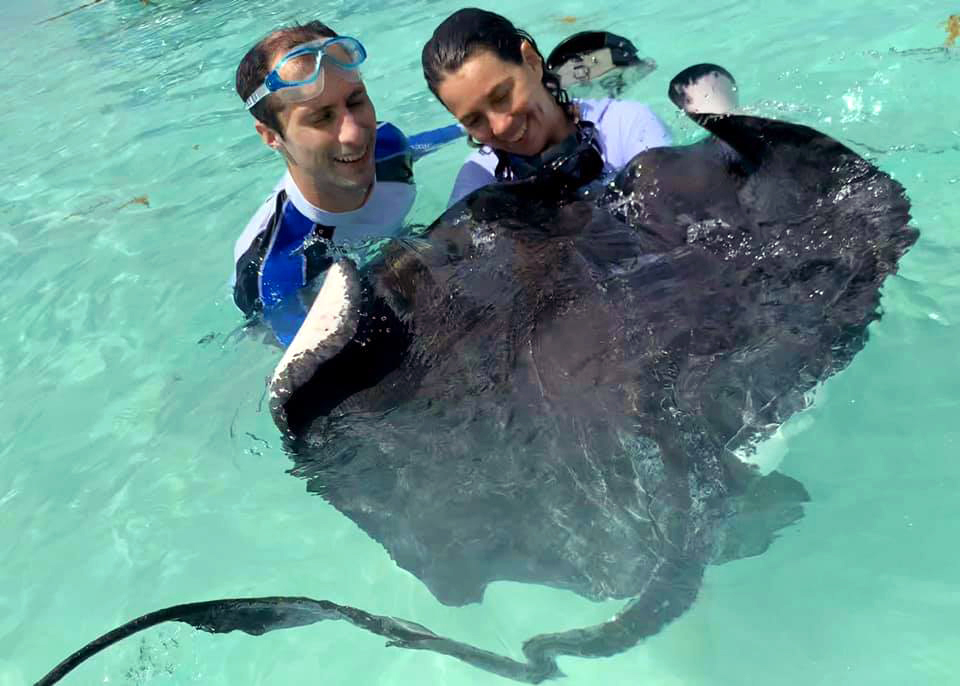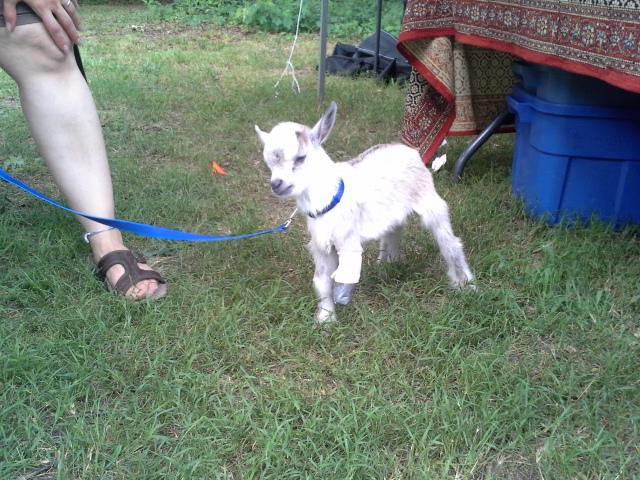“Why would anyone keep a tiny tiger in the house?” I asked my immediate circle approximately 1,000 times over the course of the last 20 years. Never mind that I’d made it a lifelong habit of always having at least one tiny wolf by my side.
To me, housecats were miscreants who spent their days plotting the overthrow of their rulers à la Animal Farm’s Napoleon and Snowball. That was made quite clear by the multitudes of felines I’d met who’d bat their eyes for a gentle pet only to sink their claws into my wrist moments later. Or, a decade ago, when my (very temporary) foster kitten, Elphaba Bean, would glare at me and then effortlessly slide my houseplant off the edge of the dining room table. Never mind that I internally cherished the moments she’d scale my entire body for the chance to lie on my chest purring with content, or that I volunteered monthly with a local cat rescue, or that I secretly melted every time a kitten photo crossed my social media feeds.
Devious schemers, those cats—every last one of them. Every last one, that is, until I encountered a 2-pound kitten with a black nose bordered by a white face lurking on my porch in the summer of 2021.
She was too young, too bold, for the wild, with her contrasting tones that blew the gaff on her charade as a chameleon amidst the shrubbery. I secured a kitten-sized trap from the cat rescue. I knew what I had to do.
By the next day, there was a dazed tuxedo kitten pressing herself so tightly into the corner of my laundry room that she just might have metamorphosized into the wallpaper. Success. I would spend the next few weeks vetting, spaying, and socializing her before finding her a loving home, wiping my hands clean, and calling it a day. I could add the victory to my list of good deeds for the year.
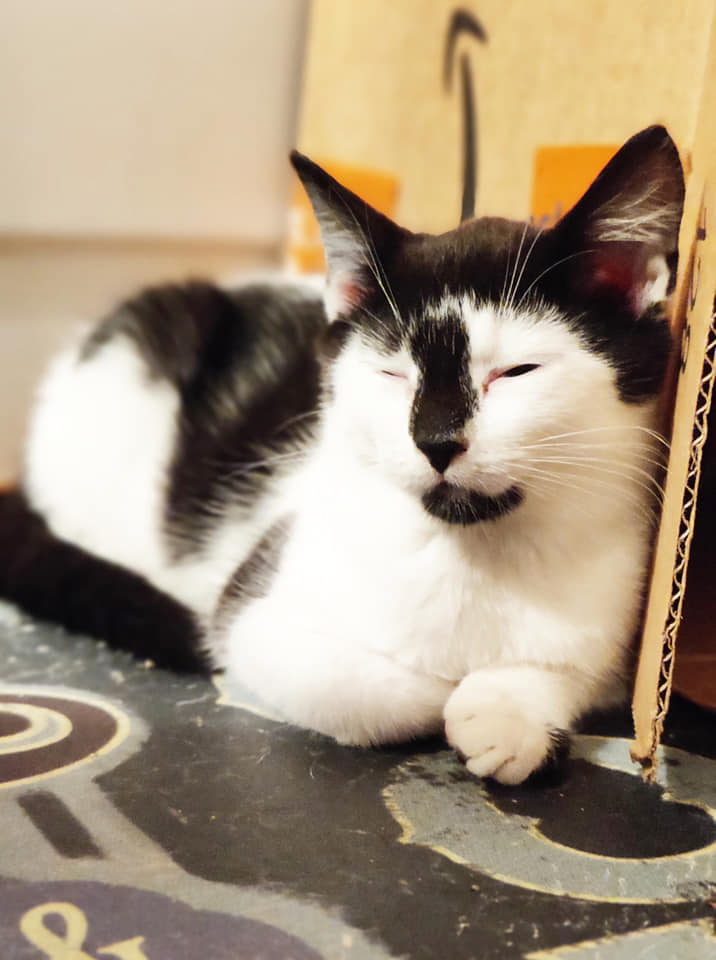
Then I stepped back outside, and there she was again, blinking up at me—only reversed? White nose, black face.
Oh. Her brother.
Soon, they were both squeezing themselves behind, above, and under cabinets, the washing machine, my fish tank. I shoved balls of towels and blankets and miscellaneous boards into every orifice to keep them out of these crevices and in my sights until I realized I had nothing left to dry off with after a shower. But despite their digging (coupled with an uncanny ability to shrink to approximately a quarter of their girth), my makeshift blockades worked, and the kittens soon acquiesced to being gently petted as they devoured their meals.
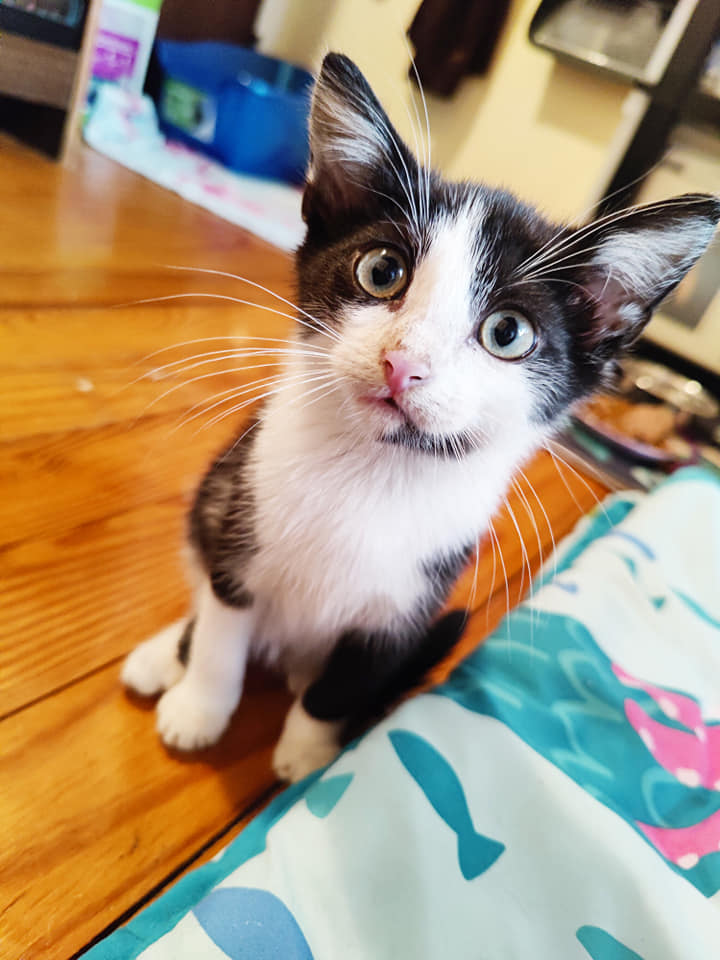
But this isn’t their story, those two kittens who, after weeks of living in my laundry room, being inundated by my persistent company, and being carted to and from traumatizing vet visits, are now hulking, thriving cats living their best lives with my boyfriend’s mother.
This is the story of their birth mother, whom I made the executive decision to trap just two nights into the kittens’ perceived imprisonment after I nearly ran her over as she chilled in the middle of my street, unperturbed by my oncoming headlights. With raindrops pattering on my roof, I set a trap and 10 minutes later returned to vibrant emerald eyes blinking into mine and a jet black face accentuated by a petite white mustache.
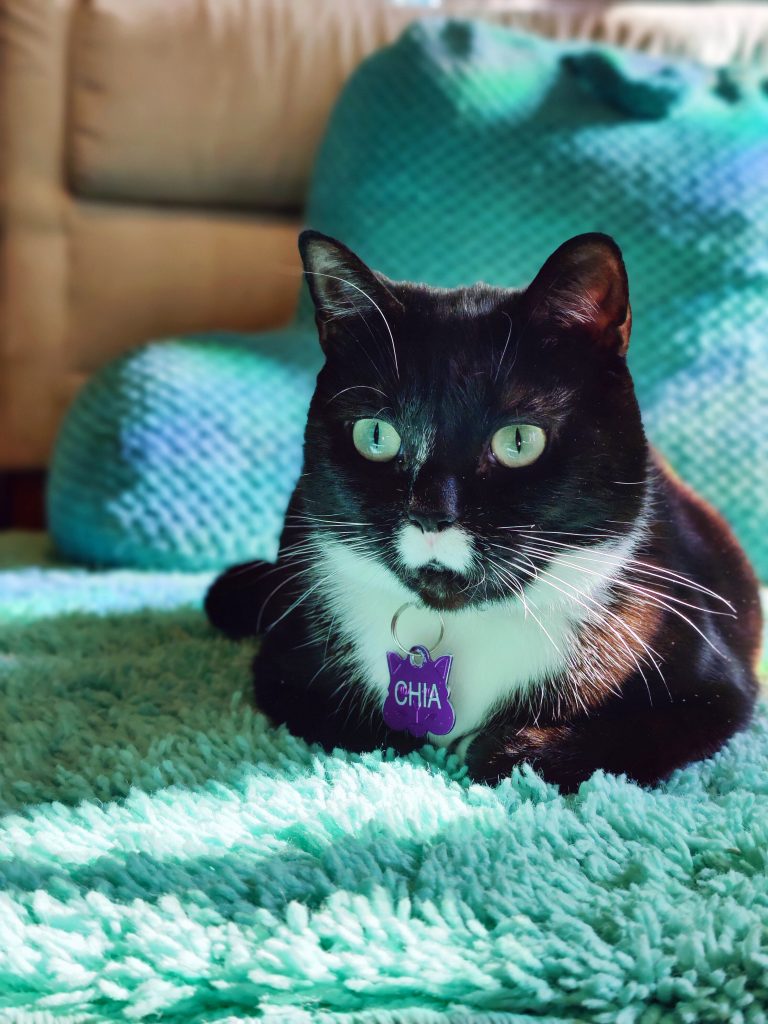
Mother and kittens hissed and fought at first, as though they’d lost their memory of one another. But by the next morning, all misgivings had been abandoned, and the 8-week-old twins had returned to suckling their young mom, who was crawling with intestinal parasites and lethargic. She silently tolerated my incessant visits to her nursery room, apparently teetering between relief at the breaks from nursing and suspicion over my intentions with her progeny.
As she healed, she remained aloof, but this mama cat I began calling Chia barely uttered a hiss and never once tried to bite. It was hard to fathom that she’d always been alone, feral; perhaps, rather, she’d been raised by a neighborhood family and then been abandoned. But I posted online; I sought her people—and no one ever came looking.
At a mere two years of age, according to Chia’s vet, she was a dedicated, focused mom. She let those kittens nurse until 13 weeks when they finally went to their new home. And though she retreated under the fish tank for almost two days after their departure, I knew the agonizing decision to split them up was what needed to be done. In my humble abode with a pig and one of those aforementioned tiny wolves, a family of three felines would not fit.
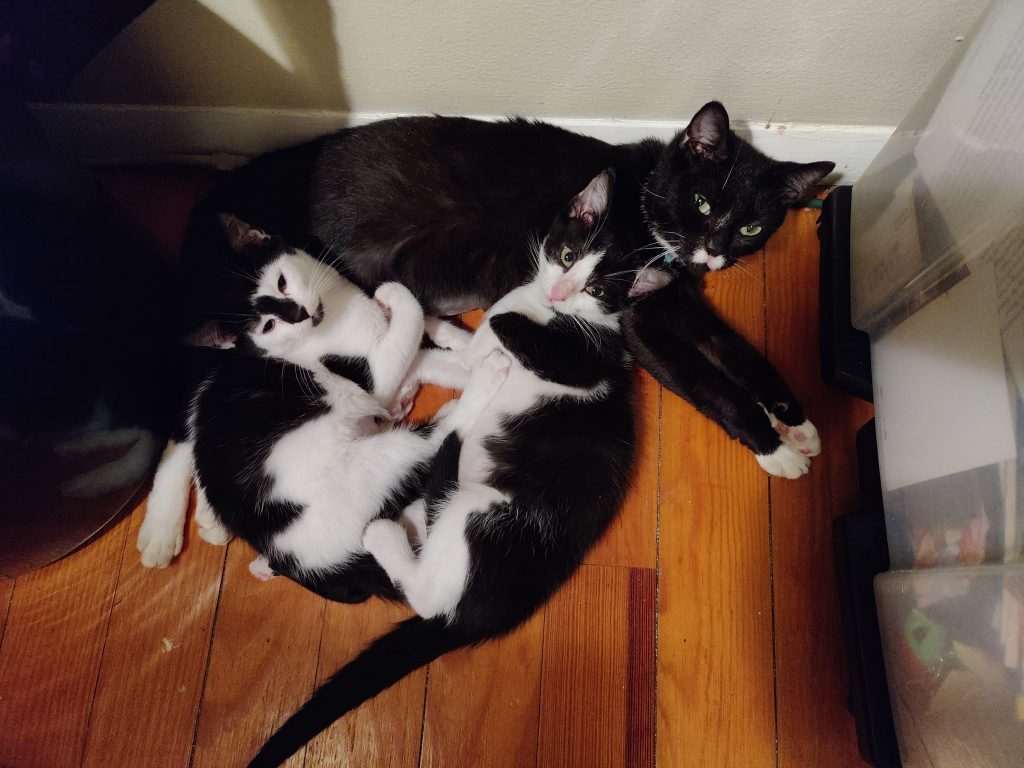
It was time for Chia, too, to find a home of her own, yet a month or so in, it had become apparent that home was with me. After all, she’d chosen my yard, of all yards, in which to deposit her kittens, somehow knowing, or hoping, she’d find safety. A tiny tiger had taken up permanent residence, and it felt perfectly rational to accommodate this conspiratorial predator. She camped out in the laundry room by day, averse to confrontations with my tiny wolf, Powder, and prowled for unsuspecting crickets at night. The tenuous relationship she’d begun to forge with Powder, though, was cut short upon Powder’s sudden departure due to a massive cancer of the heart that December. I was all Chia had left, apart from the potbellied pig inhabiting the living room with whom she had no desire to associate.
Chia’s nightly escapades throughout the house grew longer, and her hours beneath the fish tank shrank. She yowled like a lost child while I slept, so I invited her into my room. When she’d finally recovered from her worm-induced malnutrition, she instituted a ritual of early morning rampages with her stuffed mouse that led to many sleep-deprived workdays on my part.
Although grumpy with fatigue, I relished in Chia’s youthful frenzy, which injected life into a household left vacant of Powder’s once effervescent presence. Still, in my season of grief, I couldn’t reciprocate that energy. We both needed a friend.
That’s when Chia’s new sister, Lip Gloss, a formerly neglected senior lady from a hoarding case, entered the picture, or rather, strutted in with the air of a queen claiming her rightly throne on my pillow. Chia’s first reaction was to smack LG and run away. But LG didn’t blink—she simply smacked her back. She could take it.
Over the coming weeks, the new frenemies interacted like stars of a cat soap opera. Despite their overt daily scuffles over tensions invisible to me, though, Chia’s confidence was soaring. Her midnight mewling simmered out, she became willing to nap within six feet of her sister, and the two tested the waters at brief games of tag. Peace descended on the household, punctuated only periodically by mutual slaps. The challenge, it seemed, had inspired compromise and adaptation.
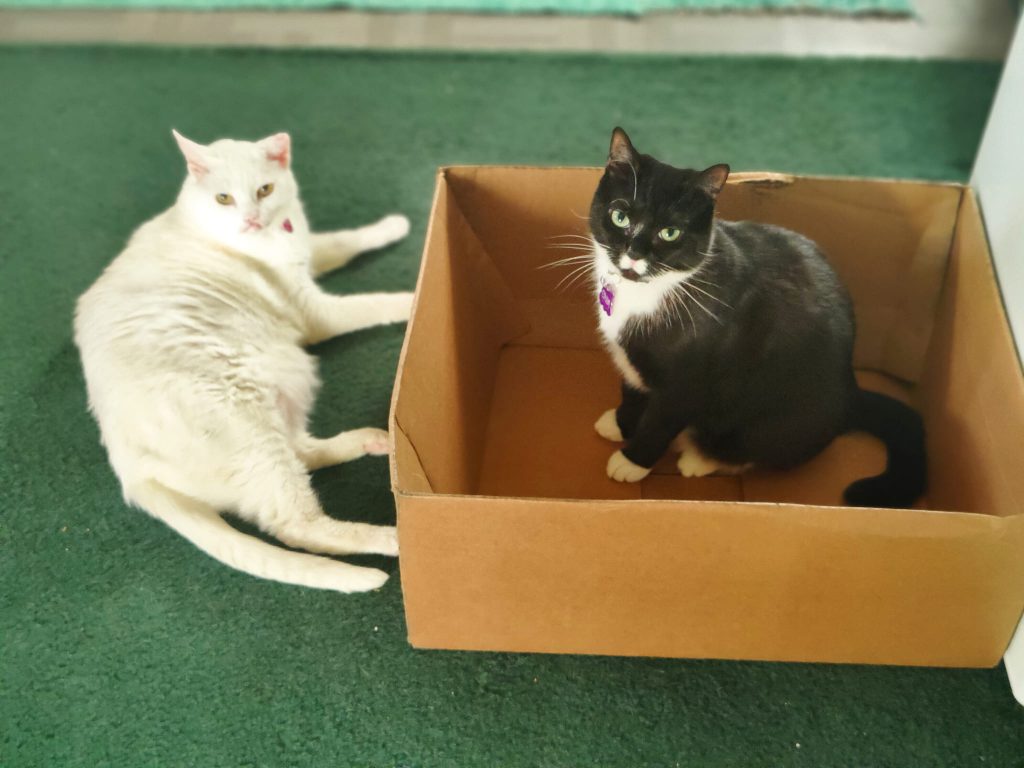
If only humans handled conflicts like these cats, I mused one day. We’d just hurl a bad word, storm off, and sit in our respective corners to mull over what we’d done before coming back and apologizing an hour later. Perhaps we’d stop threatening nuclear warfare to prove our own might, or at least stop passive aggressively blasting our neighbor on Nextdoor when they let their grass get 6 inches too tall.
A few months in, I was narrating my adventures in feline companionship to my aunt, a lifelong cat lady. “Just wait. Chia has some surprises in store for you,” she declared.
I didn’t really believe her, assuming that with Chia, and cats broadly, “What you see is what you get.” But one day, during my newly acquired habit of reading about cats in my free time as I worked toward completing my own transition into a cat lady, I learned that it can take between 6 and 12 months for two cats to form a solid friendship. In my experience with dogs, generally, they either were or they weren’t friends. They wore their feelings on their sleeves. Cats, meanwhile, quietly survey their surroundings, formulate a hypothesis, hash out a plan of action, assess the results, and repeat until they’ve refined a strategy. They’re subtle scientists, on a path of evolution.
Sure enough, over the next year, my aunt’s predictions came to fruition. Chia and Lip Gloss are not only in an intense love-hate sisterhood consisting of Chia fervently grooming Lip Gloss’ face until the latter bats her away with impudence (only to beckon her to come play hours later)—but Chia also offers me, the human she’s supposed to be dethroning any day now, plentiful sandpaper kisses in return for a mere scratch on the back. The pair started to sleep cuddled on either side of me all night, purring like a massage chair. And now, Chia only disappears under the fish tank when the vacuum comes out.
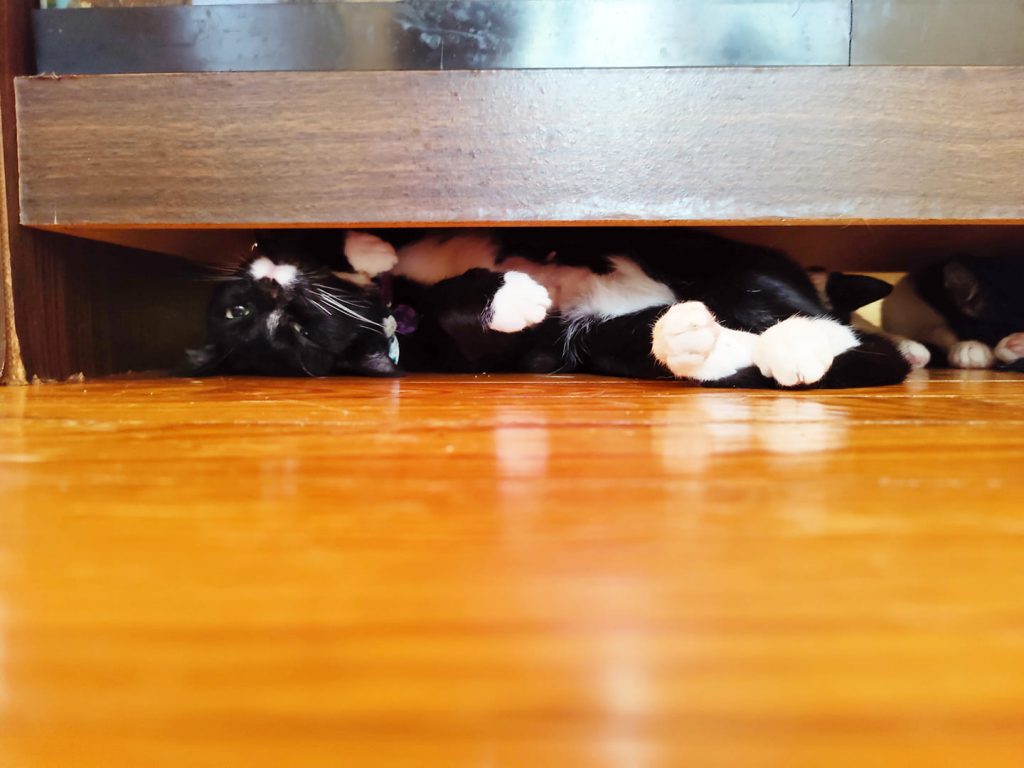
For over 30 years, I surrounded myself with canines who felt often like an extension of me, with their unwavering affection and codependency. I couldn’t have conceived of welcoming into my home an unpredictable being who clears countertops in one leap and inexplicably, according to science, is aware at all times of my exact position in the house without even laying eyes on me. (Seriously, if that spy skill isn’t evidence of a conspiracy waiting to happen, I’ve got nothing.) I never could have predicted becoming the narrator in Taylor Swift’s “Gorgeous,” who sings, “Guess I’ll just stumble on home to my cats.” But here I am, enamored by my cats so much that I even painted the line on a cat-themed cardigan, which I purchased through an auction benefiting that cat rescue that let me borrow those traps that summer. And it all started because of the mama cat I came so close to running over that August night who now, with a complete lack of ferocity, licks my nose every time I offer her a kiss.
Oh, and as of early 2023, we’re now a three-cat family.
This story was written with the help of Tina Marie Johnson of Blue Mountain Creative Consulting.


